Building Educational Institutions: A Comprehensive Guide
Building an educational institution is more than just constructing classrooms and offices; it's about creating an environment that fosters learning, creativity, and community. This article aims to provide a comprehensive overview of what goes into building educational institutions, from initial planning to the completion of the project.
Key Takeaways:
- Planning and Design: The importance of initial planning, acquiring land, and designing blueprints.
- Construction Phases: Details about the stages of construction and what each entails.
- Sustainability: Emphasizing eco-friendly practices in the construction of educational buildings.
- Safety and Compliance: Ensuring all safety regulations and compliance measures are met.
- Community Engagement: The role of community input and involvement in the project.
The Importance of Planning and Design
Building an educational institution starts with thorough planning and meticulous design. This phase is crucial as it sets the foundation for a successful project.
Budgeting and Land Acquisition
Establishing a budget and acquiring suitable land are the first steps. It's essential to invest time in researching land prices, zoning laws, and environmental conditions.
Architectural Design
Engaging experienced architects and designers is crucial. They help translate the educational institution's vision into concrete plans. The design should accommodate various needs, including classrooms, laboratories, libraries, and recreational areas.
Construction Phases
The construction of an educational institution can be divided into several phases, each with its own set of activities and goals.
Pre-Construction
This phase includes site preparation, obtaining necessary permits, and finalizing budgets and timelines. Detailed project management is essential to avoid delays and cost overruns.
Foundation and Framing
Once the permits are in place, the next step is laying the foundation and framing the structure. This phase involves significant groundwork and setting up the building's basic framework.
Electrical and Plumbing
After framing, electrical and plumbing systems are installed. These systems must comply with local codes and regulations to ensure safety and functionality.
Interior and Exterior Finishes
The final phase involves adding interior and exterior finishes. This includes installing windows, doors, flooring, and painting walls. The goal is to create a welcoming environment conducive to learning.
Sustainability in Educational Building Construction
Sustainable building practices are gaining traction in the construction industry, and educational institutions are no exception.
Energy Efficiency
Incorporating energy-efficient systems, such as solar panels and LED lighting, can significantly reduce operational costs. These systems also have the added benefit of being more environmentally friendly.
Green Building Materials
Using eco-friendly materials like bamboo, recycled steel, and low-VOC paints can contribute to a healthier indoor environment. These materials are also more sustainable, reducing the building's carbon footprint.
Water Conservation
Installing water-efficient fixtures and rainwater harvesting systems can help conserve water. These measures are not only beneficial for the environment but also reduce utility bills.
Safety and Compliance
Safety and compliance are paramount when constructing an educational institution. Ensuring that the building meets all regulatory standards is essential for the safety of its occupants.
Building Codes and Regulations
Compliance with local building codes and regulations is non-negotiable. These codes cover various aspects, including structural integrity, fire safety, and accessibility.
Safety Measures
Incorporating safety measures like fire alarms, sprinklers, and emergency exits is crucial. Regular inspections should be carried out to ensure these systems are functional.
Accessibility
The building should be accessible to all, including individuals with disabilities. This includes installing ramps, elevators, and appropriately designed restrooms.
Community Engagement
Community engagement plays a vital role in the construction of educational institutions. Involving the community can provide valuable insights and foster a sense of ownership and pride.
Community Workshops
Organizing workshops and meetings with community members can help gather input and address concerns. This collaborative approach can lead to a more inclusive and well-received project.
Local Labor and Materials
Hiring local labor and sourcing materials locally can boost the community's economy. It also fosters goodwill and cooperation, which can be beneficial in the long run.
Real-Life Experiences and Challenges
Building educational institutions often comes with unique challenges. Here are some real-life experiences from professionals in the field.
Kendrick Construction
Kendrick Construction, a renowned name in custom home building and commercial construction, recently completed a state-of-the-art educational institution in Bluffton, SC. The project involved meticulous planning, innovative design, and sustainable building practices.
Challenges Faced:
- Budget Constraints: Managing the budget while ensuring high-quality materials and construction.
- Regulatory Hurdles: Navigating the complex web of local building codes and regulations.
- Community Concerns: Addressing concerns from community members regarding the construction's impact on the local environment.
Solutions Implemented:
- Efficient Project Management: Detailed planning and constant monitoring helped keep the project on track.
- Sustainable Practices: Incorporating eco-friendly materials and systems reduces the building's environmental impact.
- Community Engagement: Regular meetings with community members ensured their concerns were addressed, fostering a positive relationship.
Future Trends in Educational Institution Construction
The construction of educational institutions is evolving, with new trends emerging that focus on enhancing the learning environment.
Smart Classrooms
Incorporating technology into classrooms can enhance learning experiences. Smart boards, digital projectors, and high-speed internet are becoming standard in modern educational buildings.
Flexible Learning Spaces
Creating flexible learning spaces that can be easily reconfigured to suit different activities is gaining popularity. These spaces foster collaboration and creativity among students.
Biophilic Design
Integrating natural elements like plants, natural light, and outdoor learning areas can improve student well-being and productivity. Biophilic design is becoming a key consideration in educational building construction.
Conclusion
Building an educational institution involves more than just construction; it's about creating a space that fosters learning, community, and sustainability. Every step is crucial for success, from meticulous planning and innovative design to incorporating sustainable practices and engaging the community. By understanding the key aspects and challenges, builders can create educational institutions that stand the test of time and contribute positively to the community.
Key Points:
- Thorough planning and design are crucial for a successful project.
- Sustainability should be a key consideration in construction.
- Safety and compliance ensure the well-being of occupants.
- Community engagement fosters a sense of ownership and pride.
Building an educational institution is a complex yet rewarding endeavor that can significantly impact the community and future generations.
FAQ Section
What are the initial steps in building an educational institution?
The initial steps include budgeting, land acquisition, and engaging architects and designers to create blueprints and layouts.
Why is sustainability important in educational building construction?
Sustainability reduces environmental impact, lowers operational costs, and creates a healthier indoor environment for students and staff.
How can community engagement benefit the construction process?
Community engagement provides valuable input, fosters goodwill, and can lead to a more inclusive and well-received project.
What are some emerging trends in educational institution construction?
Emerging trends include smart classrooms, flexible learning spaces, and biophilic design, all aimed at enhancing the learning environment.
How does Kendrick Construction approach building educational institutions?
Kendrick Construction focuses on meticulous planning, sustainable practices, and community engagement to ensure successful projects that benefit the community.
By understanding these aspects and implementing best practices, builders can create educational institutions that are not only functional but also inspiring and sustainable.

